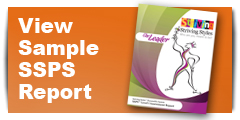ORGANIZATIONAL AND BUSINESS
The Role of Emotions in Organizations
In the absence of being able to express their emotions and connect with the organizational identity, employees are expected to adapt to role driven behaviour. This can result in a decrease in an employee’s ability to contribute anything more that what is defined by the role, leaving both leaders and employees frustrated. In addition the burnout suffered by employees who have been forced into excessive adaptation increases.
Leaders who have worked to mature their emotions are able to create a mature organization that expands in consciousness and awareness, whether they are Traditionalist or Visionary. They accept that emotions can be used as resources when they are managed and harnessed, rather than as disruptive and inappropriate in the workplace. In this regard, they are viewed as any other source of information or resource that is vital to the life of the organization. Human resource systems such as recruitment, selection, recognition, and performance management, provide the context within which the values and intention of the organization can exist. Emotions and the expression of affect become a tangible resource for achieving corporate objectives. Fear of emotional expression is diminished and emotions are integrated as useful to the organizational community.
In the absence of being able to express their emotions and connect with the organizational identity, employees are expected to adapt to role driven behaviour. This can result in a decrease in an employee’s ability to contribute anything more that what is defined by the role, leaving both leaders and employees frustrated. In addition the burnout suffered by employees who have been forced into excessive adaptation increases. The only emotions that they are able to express are those required by their roles and acceptable to their leaders. Employees will ultimately resist their leader’s attempts to manipulate their feelings, through acts of resistance. As employees feel increasingly estranged through excessive pressure to act out of a role, their loyalty and commitment diminish.
Emotions such as trust, caring, enthusiasm, pride, and even fun are necessary for organizational success and a motivated workforce. These are emotions that have gained greater acceptance as they are much easier to integrate into day to day work life. Leaders are expected to be able to generate passion and enthusiasm as the basis of success. However, this is also limiting to emotional expression as it creates a good feeling\bad feeling dichotomy where employees feel compelled to adapt to a way of behaving and emotional expression that may be inconsistent with their true feelings and nature. In addition, leaders strive to become heroes or heroines, or leaders of passionate followers, and are unable to integrate aspects of their authentic nature and leadership style.
Although Emotional Intelligence is accepted as relevant to leadership competence, what is not well communicated is the fact that emotions are at the basis of all meaningful experiences and interactions and permeate all significant aspects of a person’s experience. Everything that is meaningful and memorable is emotionally charged. Yet these energetic reactions to experience continue to be controlled rather than utilized because they are feared and judged rather than understood. The complexity of emotions makes them unpredictable: they vary from person to person, and are experienced to different degrees, depending upon an individual’s conditioning and development. This lack of predictability, and the irrational nature of emotion and affect, leaves leaders without a reliable format or structure for dealing with them. The subjective nature of the leader interacting with the emotion of the employee can only be understood through the process of learning, interacting, reflecting and exploring new behaviours by the leader and ideally the employee.
In order for leaders to harness the power of emotions, they need to understand what they are. Most leaders have not been taught the difference between Affect, Emotion and Feeling. Many can not distinguish between their emotions and their value judgments, using terms like “I feel fine” or “I feel bad” as a way of describing their emotional experience. These judgments are used interchangeably and imprecisely, almost synonymously. However, their etymology and the physical and mental reactions they cause are very different.
Emotions originate from our exposure to specific situations. One of the main purposes of an emotion is to connect our primitive nature with the world in which it is entrenched. Emotions are the most responsive forms of attention we have, operating outside of our conscious awareness. They respond immediately to the truth of things. Fear warns us of danger; desire compels us to
recognize what is beautiful, sympathy to those who are suffering. When we respond from our emotions we are most connected to others and to the world around us. They provide us with the ability to survive and to thrive, to communicate distress and exhilaration. Emotions guide behavior into participation with things that present themselves to us. In addition, the nature and the intensity of the emotion are usually related to cognitive activity in the form of the perception of the situation: that thought process or perception results in the experience and/or the expression of a related feeling.
There are emotions which are more biologically oriented and then there are complex emotions which are saturated with thoughts and cognition. For example, a more basic emotion would be simple sadness, whereas a more cognitively-saturated emotion would be something like guilt, which you might experience as a learned response to a given set of circumstances. Unfortunately, most leaders do not understand these distinctions, and as a result, are not able to respond and utilize important information that is being communicated by their employees.



















0 Comments